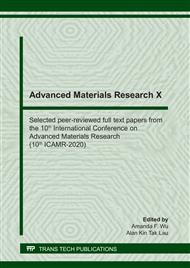p.131
p.142
p.150
p.157
p.165
p.171
p.177
p.182
p.187
Evaluation of the Modulus of Elasticity for Dry Press Lightweight EPS Concrete
Abstract:
Expanded polystyrene (EPS) concrete is a promising material as lightweight features, environment-friendly materials and potentially used in lightweight building construction. However, EPS concrete has substantially affected the transition zone of elastic behavior of the element. This paper aims to evaluate the modulus of elasticity (MOE) from the compression test method for the EPS concrete. The MOE also was predicted through existing models in codes of practice using actual data from compressive strength and density of EPS concrete. To verify the proposal of a new empirical model from EPS concrete, the actual and prediction of MOE were compared. The EPS concrete specimens were based on EPS replacements and design mixtures. From the outcome of the study, it demonstrated significant improvements in strength and in the elasticity modulus were observed in the implementation of the dry press moulding for concrete mixtures.
Info:
Periodical:
Pages:
165-170
Citation:
Online since:
July 2020
Keywords:
Price:
Сopyright:
© 2020 Trans Tech Publications Ltd. All Rights Reserved
Share:
Citation:


